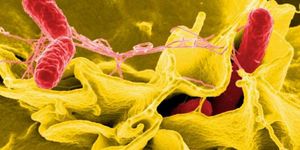Introducing DeepTCR, the deep-learning software for T-cell receptor sequencing data
A team from the Bloomberg~Kimmel Institute for Cancer Immunotherapy at the Johns Hopkins Kimmel Cancer Center is introducing DeepTCR, a software that uses deep learning to understand T-cell receptor data. T-cell receptors (TCR) are protein complexes on the surface of T cells that recognize fragments of antigens such as those found on cancer cells and cells infected with viruses. TCRs play an important role in navigating T cells to locate antigens in the body. The research was in Nature Communications.
The lead author of the study is John-William Sidhom, an M.D./Ph.D. student at the Johns Hopkins University School of Medicine and Department of Biomedical Engineering. Sidhom comments, “DeepTCR is an open-source software that can be used to answer questions in research into infectious disease, cancer immunology, and autoimmune disease; any place where the immune system has a role through its T-cell receptors."
Using deep learning allows the software to analyze T-cell sequencing data more efficiently. The framework of the deep-learning software is a convolutional neural network, which structures the system so that users can locate T-cell sequencing patterns that are relevant to whatever specific exposure is relevant to their work, i.e. a type of cancer or an autoimmune disease.
"When presented with a lot of data, our algorithms can learn rules of these TCR sequence patterns. For example, we may not know the rules for how the body responds to flu, but with enough data, our software can learn those rules and then teach us what they are," says Sidhom. "It is very well-suited to identify complex patterns in a very, very large immune repertoire to identify the interacting partners between a T-cell receptor and its antigen."
The software is particularly useful in sorting between meaningful sequencing data and inconsequential data. "There are a lot of sequences in someone's immune repertoire. There are a lot of pathogens that someone can be infected by, so the immune response is very broad. As a result, there is a sea of noise in the immune response, and only parts of it are important at a certain time for a certain infection," Sidhom explains. "I may have T-cell responses to a thousand different viruses, but when the flu impacts me, I only need to utilize a small subset of those T cells to fight the flu. The main thing that the algorithm can do is isolate and match the right T cells to specific responses."
Sidhom is confident that DeepTCR will provide researchers a key tool for future investigations into immune response, be it from the flu, cancer, or otherwise.
Sources: Nature Communications, Science Daily








